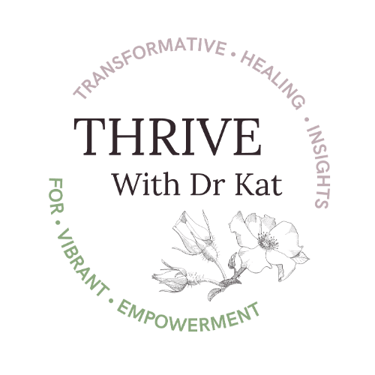Why “Normal” Lab Results Do Not Always Mean Optimal Health


Natural Treatments for Hair Loss: A Holistic Perspective
Hair loss is more than a cosmetic issue. For many women, especially in the postpartum period, it is a reminder that their body is going through profound changes. While countless products promise miracle growth, true healing begins with understanding why the loss is happening in the first place. Naturopathic medicine looks at the whole picture—nutrition, hormones, stress, and lifestyle—to uncover the root causes and support your body’s ability to recover.
Understanding the Hair Growth and Shedding Cycle
Hair follicles move through a repeating cycle:
Anagen (growth phase): Hair actively grows, usually for 2 to 5 years. About 85 percent of scalp hairs are in this phase at any time.
Catagen (transition phase): A short 2 to 3 week period where hair growth slows and the follicle prepares for rest.
Telogen (resting phase): Lasts around 3 months. About 10 to 15 percent of hairs are in this stage at any time.
Exogen (shedding phase): The hair is released and falls out, making room for a new hair to begin the cycle again.
Under normal conditions, these phases are staggered, which is why we lose some hair each day without noticing a major difference in overall volume.
Why Postpartum Hair Loss Happens
During pregnancy, high estrogen levels keep more hairs in the anagen or growth phase. This is why many women notice thicker, fuller hair. After childbirth, estrogen levels fall quickly. This sudden change causes many follicles to shift into the telogen and exogen phases at the same time.
This is called postpartum telogen effluvium. Shedding usually begins two to five months after delivery and can last several months before hair cycles return to normal.
A study in The Journal of Dermatology confirmed this by showing that the proportion of hairs in the anagen phase is significantly higher during pregnancy, while the telogen rate rises postpartum.
Shedding Versus Breakage
Not all hair in the shower or on your pillow is true loss. There are two main possibilities:
Shedding: The hair comes out at the root, often with a tiny white bulb at the end. This is part of the natural exogen phase of the cycle. Postpartum hair loss typically looks like shedding.
Breakage: The strand snaps somewhere along its length, not at the root. These pieces are often shorter and uneven. Breakage is more likely if hair is dry, brittle, or frequently exposed to heat styling, harsh chemicals, or tight hairstyles.
Knowing whether you are experiencing shedding or breakage helps determine whether to focus more on internal support like hormones and nutrition or external care like scalp and shaft protection.
Why Protein Matters
Hair is primarily made of keratin, a structural protein. Without enough dietary protein, the body prioritizes other vital functions like tissue repair and hormone production, leaving hair more vulnerable.
Signs you may need more protein for hair health include brittle texture, slower regrowth, and frequent breakage.
Protein-rich foods include lean meats, fish, eggs, lentils, beans, quinoa, nuts, seeds, and dairy or fortified alternatives. For postpartum women, protein is essential not only for hair but also for milk production, hormone balance, and recovery from childbirth.
Natural Approaches for Hair Health
Nutrition and Key Nutrients
Iron, zinc, vitamin D, and biotin are common factors in hair health. Postpartum women are especially at risk of low iron after delivery, and these nutrients can be measured with functional lab testing to guide safe and effective support.
Herbal and Botanical Support
Some herbs and oils show promise. Saw palmetto and pumpkin seed oil have been studied for hair density, while rosemary oil massaged into the scalp may improve circulation. If you are breastfeeding, herbs require extra caution. Saw palmetto is not recommended, and oral rosemary extract should be avoided, but diluted topical rosemary oil may be a safer option. Always discuss herbs with a qualified provider before use during breastfeeding.
Stress, Hormones, and Real Life
High cortisol and shifting thyroid or sex hormones can all affect hair cycles. And while advice to “just rest” can feel out of touch, even small changes matter. Cutting back on stimulants like caffeine, saying yes to a nap or a quiet rest instead of powering through chores, and giving yourself short pauses to breathe can support both nervous system balance and hair regrowth.
Gentle Scalp and Lifestyle Care
Massage the scalp to encourage circulation. Avoid harsh treatments and heat styling while hair is vulnerable. Stay hydrated and prioritize protein at meals to create the conditions for new hair to grow strong.
Final Thoughts
Postpartum shedding is common, but that does not mean it is easy. Understanding the growth and shedding phases of hair helps normalize the experience and reminds you that this shift is temporary. By supporting your body with nutrition, safe natural options, stress awareness, protein intake, and gentle care, you can rebuild balance inside and out.
If you feel your hair loss is severe, lasting longer than expected, or leaving you overwhelmed, I am here to help. Through functional labs, nutritional guidance, and individualized naturopathic support, we can uncover your unique root causes and create a plan that works for you.
Sources
Headington JT. “Hair follicle biology and topical minoxidil: possible mechanisms of action.” J Am Acad Dermatol. 1998;38(2 Pt 3): S22–6. NCBI Bookshelf overview of the hair cycle
Miyamoto N, et al. “The changes in the hair cycle during gestation and the postpartum period.” J Dermatol. 2013;40(5): 397–401. PubMed PMID: 23682615
Cleveland Clinic. “Postpartum Hair Loss (Telogen Effluvium).” Cleveland Clinic
